|
|
|

|
|||||

|
|

Electronics distributor Richardson Electronics (NASDAQ:RELL) reported Q3 CY2025 results beating Wall Street’s revenue expectations, with sales up 1.6% year on year to $54.61 million. Its GAAP profit of $0.13 per share was significantly above analysts’ consensus estimates.
Is now the time to buy Richardson Electronics? Find out by accessing our full research report, it’s free for active Edge members.
“We are pleased with our solid first quarter fiscal 2026 results, reflecting the value we provide our global customers, the diversity of our end markets, and the hard work and commitment of our associates. Excluding Healthcare, which the majority of assets were sold in January 2025, net sales grew by 6.8%, led by strong year-over-year growth in our semiconductor wafer fab business. A more profitable sales mix, combined with our continued focus on controlling fixed costs, drove a significant improvement in operating income, that more than tripled from the prior year’s first quarter. We also generated positive operating cash flow for the sixth consecutive quarter,” said Edward J. Richardson, Chairman, CEO, and President.
Founded in 1947, Richardson Electronics (NASDAQ:RELL) is a distributor of power grid and microwave tubes as well as consumables related to those products.
Reviewing a company’s long-term sales performance reveals insights into its quality. Any business can experience short-term success, but top-performing ones enjoy sustained growth for years. Regrettably, Richardson Electronics’s sales grew at a mediocre 6.4% compounded annual growth rate over the last five years. This was below our standard for the industrials sector and is a poor baseline for our analysis.
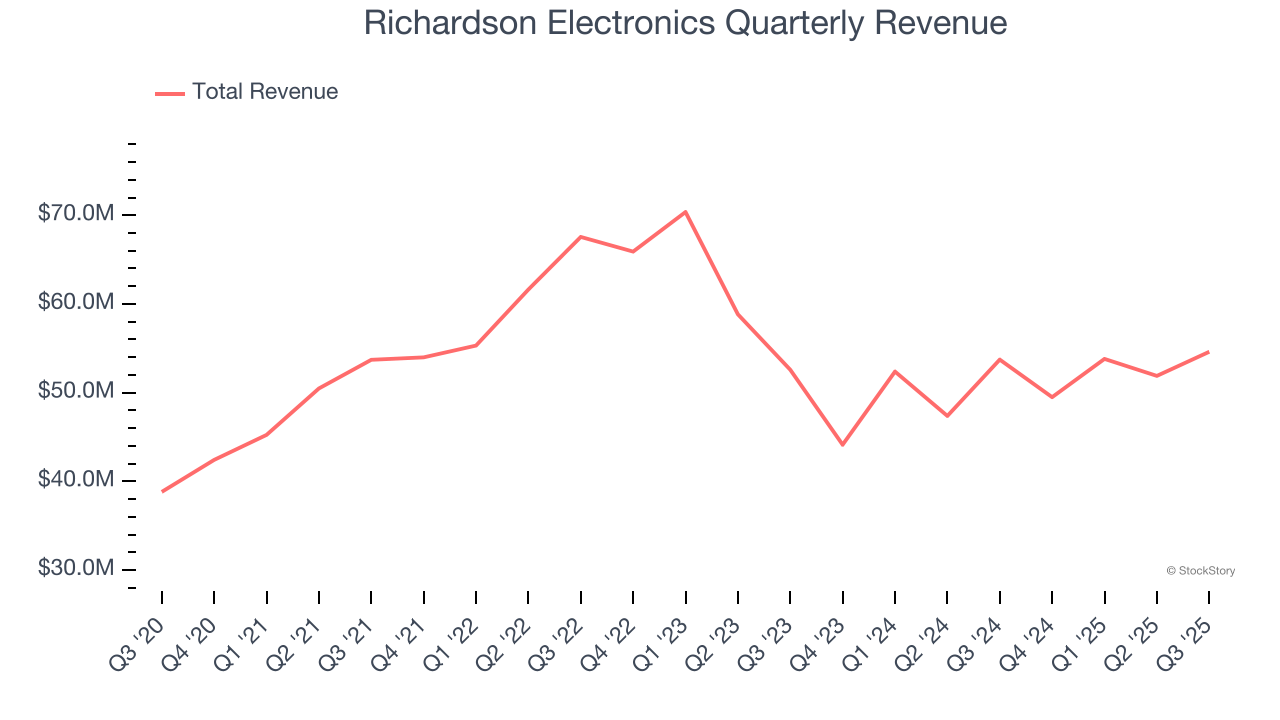
Long-term growth is the most important, but within industrials, a half-decade historical view may miss new industry trends or demand cycles. Richardson Electronics’s performance shows it grew in the past but relinquished its gains over the last two years, as its revenue fell by 8% annually.
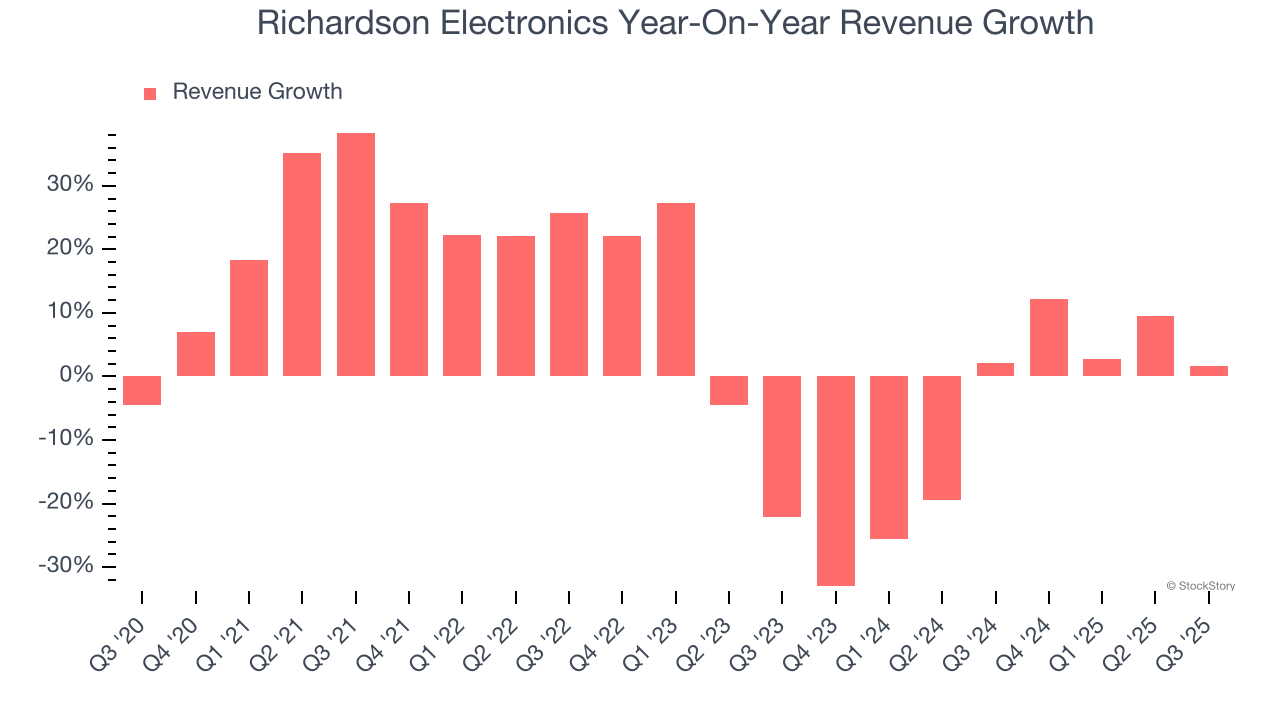
We can dig further into the company’s revenue dynamics by analyzing its backlog, or the value of its outstanding orders that have not yet been executed or delivered. Richardson Electronics’s backlog reached $134.7 million in the latest quarter and averaged 2% year-on-year declines over the last two years. Because this number is better than its revenue growth, we can see the company accumulated more orders than it could fulfill and deferred revenue to the future. This could imply elevated demand for Richardson Electronics’s products and services but raises concerns about capacity constraints.
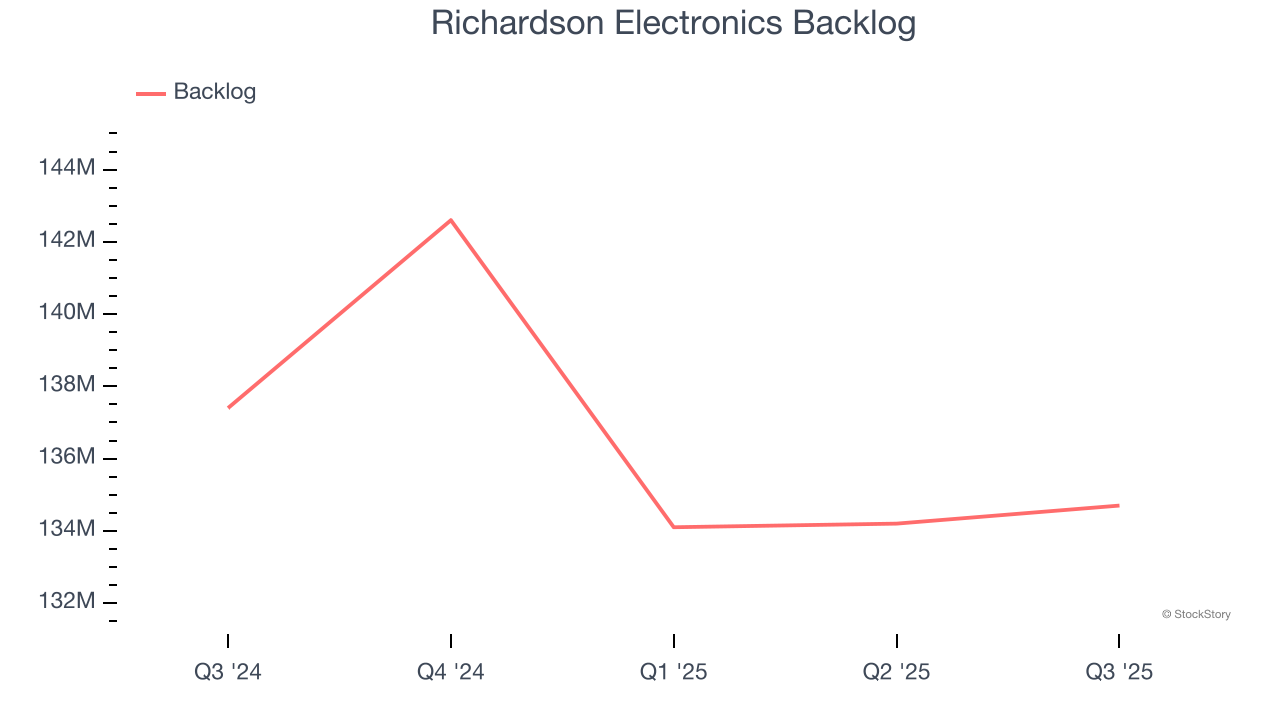
This quarter, Richardson Electronics reported modest year-on-year revenue growth of 1.6% but beat Wall Street’s estimates by 6%.
Looking ahead, sell-side analysts expect revenue to grow 5.2% over the next 12 months. While this projection implies its newer products and services will spur better top-line performance, it is still below the sector average.
Today’s young investors won’t have read the timeless lessons in Gorilla Game: Picking Winners In High Technology because it was written more than 20 years ago when Microsoft and Apple were first establishing their supremacy. But if we apply the same principles, then enterprise software stocks leveraging their own generative AI capabilities may well be the Gorillas of the future. So, in that spirit, we are excited to present our Special Free Report on a profitable, fast-growing enterprise software stock that is already riding the automation wave and looking to catch the generative AI next.
Operating margin is a key measure of profitability. Think of it as net income - the bottom line - excluding the impact of taxes and interest on debt, which are less connected to business fundamentals.
Richardson Electronics was profitable over the last five years but held back by its large cost base. Its average operating margin of 4.5% was weak for an industrials business.
Analyzing the trend in its profitability, Richardson Electronics’s operating margin decreased by 3.3 percentage points over the last five years. This raises questions about the company’s expense base because its revenue growth should have given it leverage on its fixed costs, resulting in better economies of scale and profitability. Richardson Electronics’s performance was poor no matter how you look at it - it shows that costs were rising and it couldn’t pass them onto its customers.
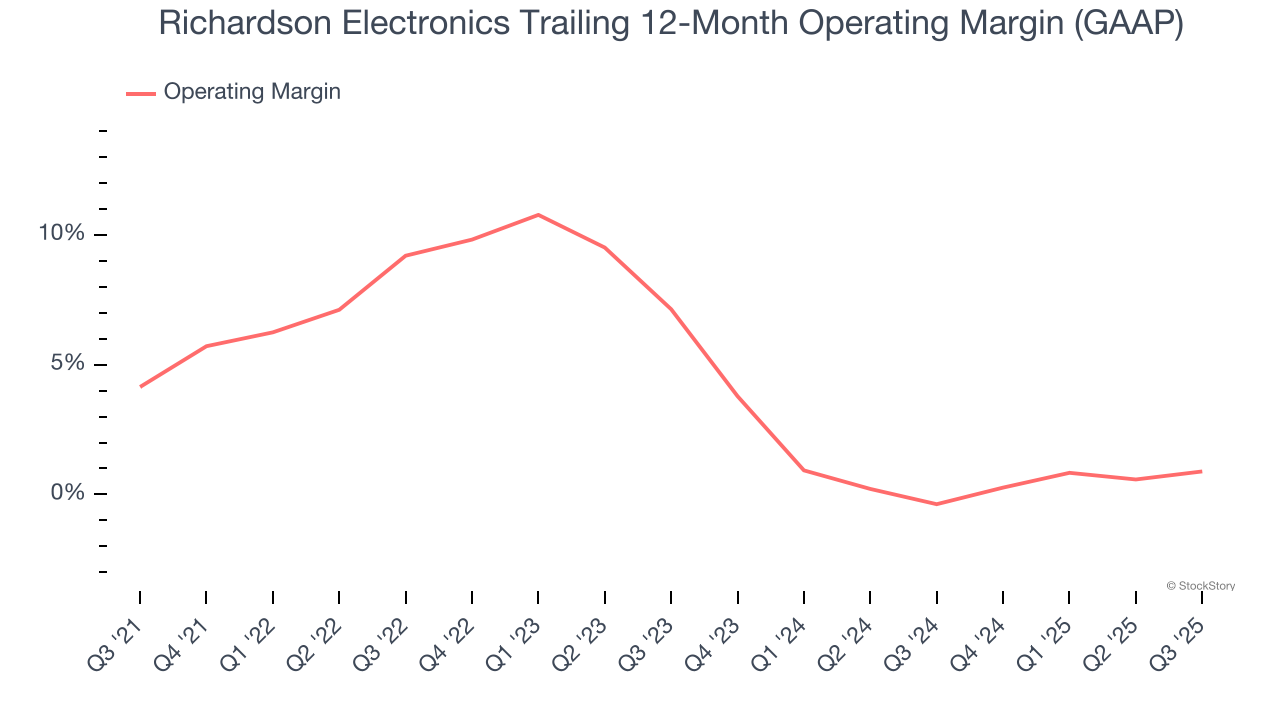
In Q3, Richardson Electronics generated an operating margin profit margin of 1.8%, up 1.2 percentage points year on year. The increase was encouraging, and because its operating margin rose more than its gross margin, we can infer it was more efficient with expenses such as marketing, R&D, and administrative overhead.
Revenue trends explain a company’s historical growth, but the long-term change in earnings per share (EPS) points to the profitability of that growth – for example, a company could inflate its sales through excessive spending on advertising and promotions.
Richardson Electronics’s full-year EPS flipped from negative to positive over the last five years. This is encouraging and shows it’s at a critical moment in its life.
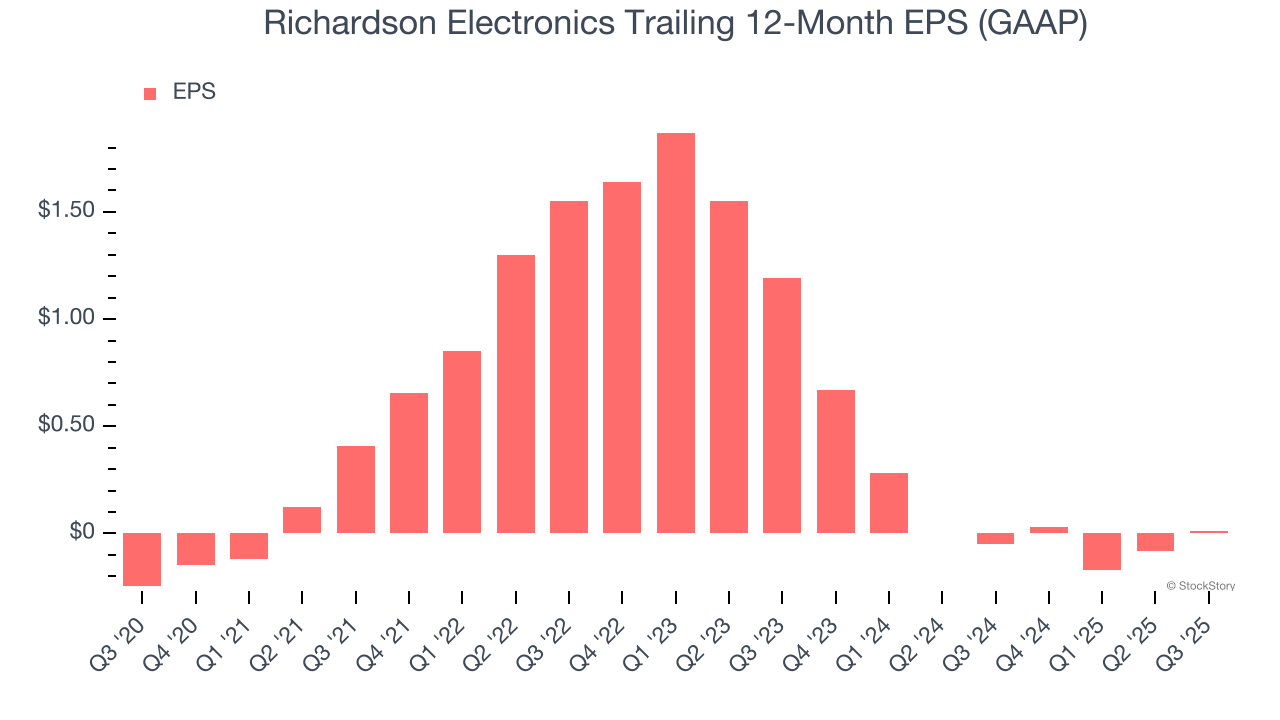
Like with revenue, we analyze EPS over a shorter period to see if we are missing a change in the business.
Sadly for Richardson Electronics, its EPS declined by more than its revenue over the last two years, dropping 90.8%. This tells us the company struggled to adjust to shrinking demand.
Diving into the nuances of Richardson Electronics’s earnings can give us a better understanding of its performance. While we mentioned earlier that Richardson Electronics’s operating margin expanded this quarter, a two-year view shows its margin has declined. This was the most relevant factor (aside from the revenue impact) behind its lower earnings; interest expenses and taxes can also affect EPS but don’t tell us as much about a company’s fundamentals.
In Q3, Richardson Electronics reported EPS of $0.13, up from $0.04 in the same quarter last year. This print easily cleared analysts’ estimates, and shareholders should be content with the results. Over the next 12 months, Wall Street expects Richardson Electronics’s full-year EPS of $0.01 to grow 2,450%.
Richardson Electronics beat analysts’ expectations across this quarter, and the beats were quite large and convincing. Management pointed out that a "more profitable sales mix, combined with our continued focus on controlling fixed costs, drove a significant improvement in operating income, that more than tripled from the prior year’s first quarter." This was a very good quarter. The stock traded up 24.4% to $13.15 immediately after reporting.
Sure, Richardson Electronics had a solid quarter, but if we look at the bigger picture, is this stock a buy? We think that the latest quarter is only one piece of the longer-term business quality puzzle. Quality, when combined with valuation, can help determine if the stock is a buy. We cover that in our actionable full research report which you can read here, it’s free for active Edge members.
| Dec-10 | |
| Nov-26 | |
| Nov-20 | |
| Nov-16 | |
| Nov-16 | |
| Nov-05 | |
| Oct-28 | |
| Oct-24 | |
| Oct-15 | |
| Oct-14 | |
| Oct-13 | |
| Oct-13 | |
| Oct-13 | |
| Oct-13 | |
| Oct-09 |
Join thousands of traders who make more informed decisions with our premium features. Real-time quotes, advanced visualizations, backtesting, and much more.
Learn more about FINVIZ*Elite